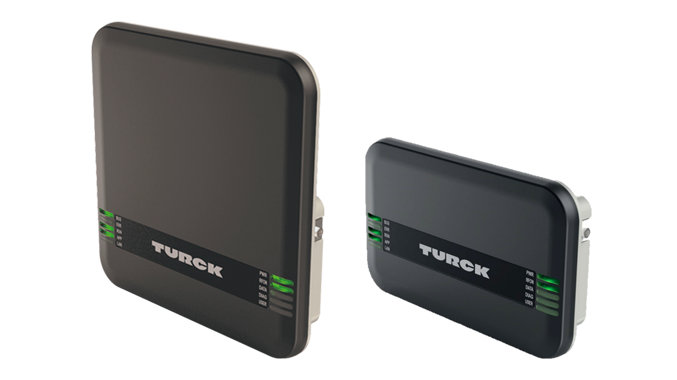www.ptreview.co.uk
25
'23
Written on Modified on
TURCK LAUNCHES Q300 AND Q180 UHF RFID READERS FOR LOGISTICS & FACTORY AUTOMATION
The Q300 and Q180 UHF readers allow connections of 4 external UHF antennas and have an integrated CODESYS runtime.

Turck has introduced the Q300 and Q180 UHF RFID readers. These Ethernet-capable solutions increase the reliability of UHF RFID applications, and thanks to external antennas, are also ideal in factories for continuous identification of objects throughout the production process. They are rated IP67, multiprotocol for multiple platform use and are easy to set up thanks to the web-based configuration of RFID parameters. With variants for a CODESYS or Linux platform, the Q300 and A180 solutions are ideal for both IT and OT applications, ensuring flexible use.
Applications
Tag detection at gates
In logistics, incoming and outgoing goods must be detected shortly before loading or unloading the trucks. With UHF-RFID this detection is reliable and also possible over long distances. So-called gates are set up for this purpose, which detect the goods on forklifts or other industrial trucks directly as they pass through. It is helpful to work with several antennas so that all tags can be reliably captured. Using multiple active read/write heads can be costly. The fast, alternating on and off switching of the various read/write heads are also too demanding for many interfaces and prone to error at high forklift driving speeds.
Turck‘s UHF read/write head Q300 allows the connection of external passive antennas. The pre-programmable multiplex operation of the read/write head responds alternately to the antennas and thus ensures fast recognition of all tags on the pallets. They are reliably detected even when the forklift passes quickly and regardless of the position and distance of the tags to the read/write head.
Position-accurate detection of components
Most components in the automotive industry are equipped with tags, both from Tier X suppliers and later from OEMs. UHF RFID is used due to its long range and resulting flexibility. However, classic UHF read/write heads are less suitable for detecting components in the near field. If several components are lying on one product carrier, all are recognized, but the localization of the components is difficult and has to be done via complex algorithms in the middleware. This is costly and can delay the implementation of the system. In the worst case, filtering via software is even error-prone.
Up to four different external antennas can be connected to the Q300 UHF read/write head for detecting tags in the near field. These can also be used for the exclusive acquisition of tags in the vicinity of the antenna. Since the read/write head recognizes which antenna has read a certain tag, the position of components on product carriers can also be easily determined.
Advantages and Benefits
Simple integration through middleware functionality
The high platform variability of the read/write heads is suitable for flexible use as middleware for connection to higher-level ERP systems. This enables a simple and seamless integration. The Q300 with middleware functionalities can filter or preprocess RFID data as required and, depending on the platform used, use integrated security protocols and authentification for transmission.
Maximum application possibilities due to passive antennas
The most diverse requirements from countless application areas in industry and logistics can now be realized with a single device. The Q300 can be extended with passive antennas for the respective application. For example, RFID UHF near-field antennas with a detection range of only a few centimetres (similar to HF technology) provide defined reading ranges. UHF-typical application problems such as "overrange" and "cross-reads" are reliably avoided in this way. With a suitable antenna, the same device can also be used to identify vehicles or reusable containers.
Safe and reliable detection through polarization switching
Switching the polarization (for example from right-handed circular to left-handed circular) changes the physical characteristics of the electromagnetic field. In this way, transponders that were previously in a communication gap can also be supplied with energy so that they can be reliably read. This increases the security of the data acquisition and increases the reading and data collection rate.
www.turck.us

